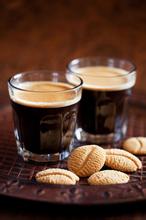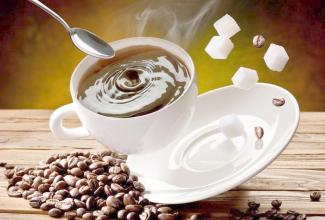Mexican Coffee Flavor Taste Introduction Mexican Fine Coffee Characteristics Origin
The quality of the raw beans exported from Mexico before is not good, and the raw beans bought are sometimes mixed with a little bit of corn and sand. If the corn is not picked clean and mixed with raw beans into the roaster, it will really become popcorn. But now the quality of raw beans exported from Mexico has been greatly improved, and the mixing of corn kernels has been a story for many years. Corn was cultivated by the ancient Indians of Mexico, so Mexico is known as the "hometown of corn", and corn is also the main crop in Mexico. Coffee in the drying process is not fine enough to mix with corn kernels. This explains why corn is mixed with corn. From this matter, it is not difficult to find that the root cause of the unsatisfactory overall quality of Mexican coffee lies in the follow-up production processing. From the harvest, treatment, grading, packaging and transportation of coffee fruits, unreasonable operation will lead to the loss of good flavor.
To match Mexico's most famous tequila with coffee, pour a small glass of tequila at the bottom of the cup, followed by milk and coffee, preferably decorated with cream and cinnamon. Tequila is a wine with great stamina. If you have enough courage, you might as well try this alternative coffee.
The selection of Mexican coffee is generally carried out manually. The main basis for selection is according to the fullness of coffee particles, whether it is uniform, and then grade it. Generally speaking, coffee with full and uniform grains is easier to preserve. Only the fullest and most evenly grained coffee beans can be roasted to represent the best and best coffee in the country.
After the workers picked the coffee beans, they spread the coffee beans in a special house with ventilation on all sides. About a week later, the coffee beans were packed in loosely packed bags so that the wind could blow through the bags. After about seven weeks, the coffee beans changed color and taste. Finally, these coffee beans are selected manually, and the coffee beans of high quality are selected and officially bagged for preservation.
Aldura coffee beans are the top coffee beans in Mexico. These coffee beans are large, with strong sweet, sour and good aroma. Non-alcoholic Mexican coffee is often paired with milk. Heat a cup of milk, a teaspoon of cinnamon powder and a teaspoon of vanilla powder in a pot at medium temperature, not too hot, and do not boil the milk. Then add the cocoa powder, fully dissolve and stir well. If you like chocolate, you can use chocolate paste instead of cocoa powder and milk. Let the milk dry for about 5 minutes, wait until the milk is slightly cool, then pour into the prepared coffee, decorate the coffee surface with cold cream, then decorate with a piece of cinnamon, and the Mexican coffee is ready. The aromas of chocolate and cinnamon blend together to give off the smell of desert. Tasting such a cup of coffee, you seem to be walking through the desert full of vicissitudes.

Important Notice :
前街咖啡 FrontStreet Coffee has moved to new addredd:
FrontStreet Coffee Address: 315,Donghua East Road,GuangZhou
Tel:020 38364473
- Prev

Small grain coffee berry Yunnan small grain coffee boutique coffee flavor taste manor introduction
The quality of coffee is determined by many factors, such as growth environment, climate, altitude, cultivation and management techniques and so on. Its best growth environment is low latitude, high altitude, sufficient rainfall, suitable light! Therefore, between latitude 15 and Tropic of Cancer is the ideal growing zone for coffee. But at this latitude, such as the United States, Hawaii, Saudi Arabia, etc. Or low altitude or little rainfall in the desert.
- Next

Rich flavor of Dominican coffee taste manor area introduces Dominican boutique coffee beans
Coffee in Dominica is grown in highlands and lowlands, and its taste is slightly different. The upland is sour, but the taste is rich; the lowland is less sour and tastes smoother. Boutique coffee has become popular in recent years. High-quality coffee beans produced by some Dominican estates have a rich aroma, mellow taste and moderately bright sour taste, and have been bought with the more famous Puerto Rico beans or teeth.
Related
- Detailed explanation of Jadeite planting Land in Panamanian Jadeite Manor introduction to the grading system of Jadeite competitive bidding, Red bid, Green bid and Rose Summer
- Story of Coffee planting in Brenka region of Costa Rica Stonehenge Manor anaerobic heavy honey treatment of flavor mouth
- What's on the barrel of Blue Mountain Coffee beans?
- Can American coffee also pull flowers? How to use hot American style to pull out a good-looking pattern?
- Can you make a cold extract with coffee beans? What is the right proportion for cold-extracted coffee formula?
- Indonesian PWN Gold Mandrine Coffee Origin Features Flavor How to Chong? Mandolin coffee is American.
- A brief introduction to the flavor characteristics of Brazilian yellow bourbon coffee beans
- What is the effect of different water quality on the flavor of cold-extracted coffee? What kind of water is best for brewing coffee?
- Why do you think of Rose Summer whenever you mention Panamanian coffee?
- Introduction to the characteristics of authentic blue mountain coffee bean producing areas? What is the CIB Coffee Authority in Jamaica?

